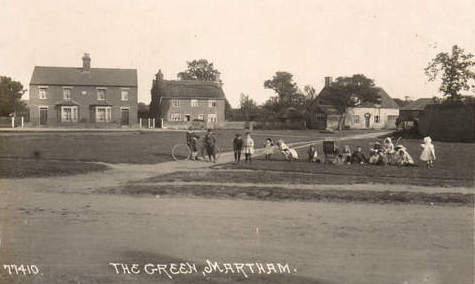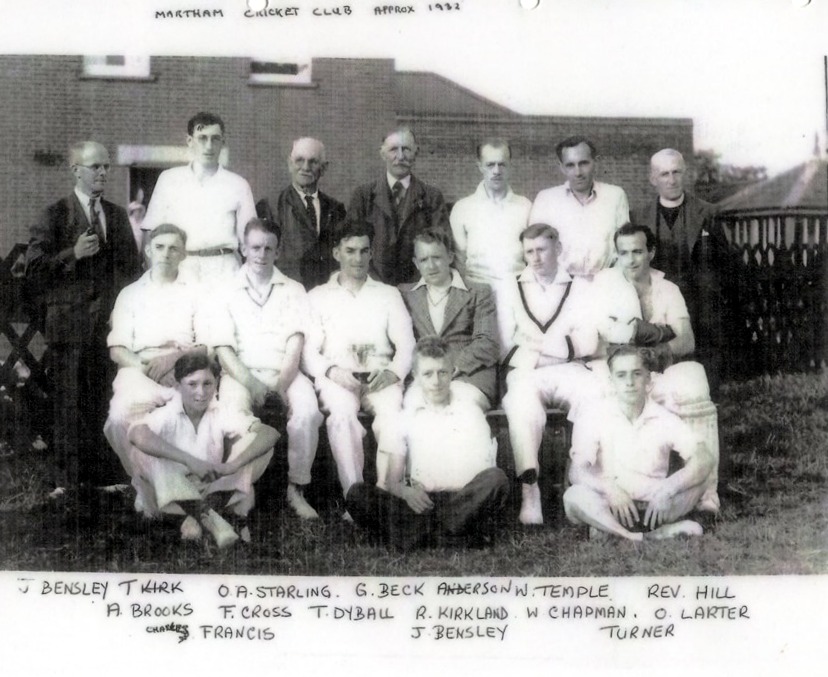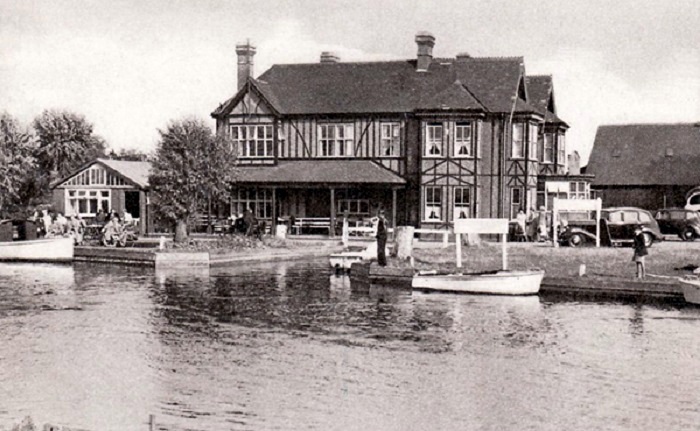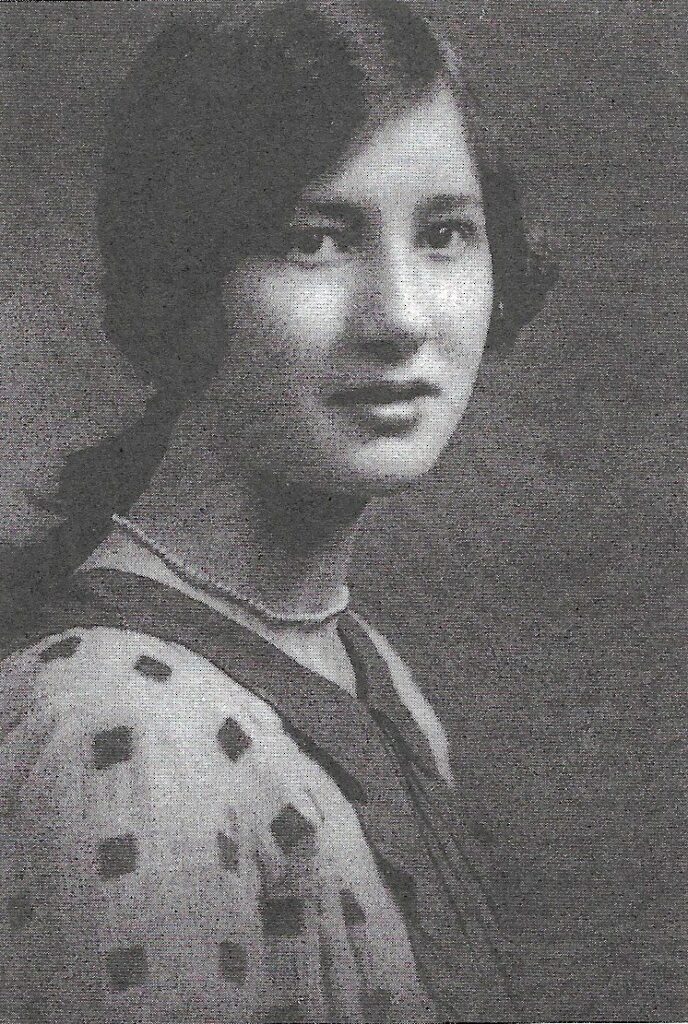Oswald George Larter (known as Ossie) of Martham

Ossie was born on 2nd January 1907 in Martham as the seventh of eight children of John & Edith Larter. His mother had the rather elegant maiden name of Edith Mary Ann Cubitt Gallant. Ossie’s father was from Ludham and moved to Martham shortly before he married Edith. In Martham he had become a self-employed painter and decorator which was to influence Ossie’s future occupation.

By the time of the 1911 census, when Ossie was four, his parents and siblings lived at 2 Ross Villas on The Green which was one of a semi-detached pair of houses shown on the left. Ossie followed in his father’s footsteps as a decorator assisting further by also becoming a plumber. In his spare time he was a keen cricketer and the photo below shows him in the Martham team in about 1932.


At Potter Heigham there was a public house and hotel called the Bridge Inn and next door to it was Drake’s Dance Hall which is where Ossie met his future wife Helen Rhoda May Storey-Smith. She was born on 19th May 1910 at Horning as the daughter of Herbert Sydney Storey-Smith and Blanche Myhill. Ossie and Helen married in 1938 and went on to have twins on 27th July 1939 who were named Joseph and Mary. They were born at ‘Leaside’, Black Street, Martham which was a bungalow their grandfather had built next door to his own home called The Limes. (‘Leaside’ has since been demolished but the owners of the new bungalow retained the same name). Daughter, Mary was married twice; firstly, to Frank Gordon Chapman a teacher from Fleggburgh and after he died, she married George Lovewell Blake, an accountant from Great Yarmouth. Her twin brother Joe was the entrepreneur most famous for developing Pleasurewood Hills American Theme Park.

Ossie & Helen moved several times during the early years of their marriage. For a short while they lived at Repps Road where a long garden backed onto the railway and the engines must have provided an impressive sight for the young twins. As a result of the war rented property became harder to find but a farmer friend of Ossie’s called Billy Chapman let them rent Moregrove Farm House, which he owned, and the resident Jones’ family graciously agreed to share. Much, much later Joe Larter wrote a book called ‘Serendipity’ in which he describes in detail what it was like living at Moregrove and you can read his account by clicking HERE. By this time Ossie had started to develop his business as an all-round builder.
The family moved to Winterton in about 1944 to a house next to the beach called ‘Broad View’ which was a big improvement on sharing at Moregrove. Both parents and children had their own bedrooms and Joe recalls in his book a large garden plus thousands of acres of sand dunes and marram grass stretching as far as the eye could see which they were free to play in. Ossie set to work on the basic house by improving the plumbing and drainage, installing electricity and a Raeburn-type coal fired oven in the kitchen bringing the equivalent of luxury in comparison with Moregrove.
The war resulted in building material shortages and Ossie became adept at acquiring second-hand bricks and timber from bomb damaged properties or washed ashore from old wrecks. There was a ‘reclaim’ area on Caister Road, Great Yarmouth where all sorts of materials recovered from bomb damage sites were gathered together. You had to get a permit to buy new materials but you could freely use anything reclaimed. Strange to think that today it is called recycling and thought of as being the latest thing but it was already happening in the 1940’s. Ossie had established a solid building and contracting business based in some old net-repairing sheds in Low Road, Winterton which he rented at first and then bought. At that time there was also no such thing as planning permission which meant he could buy land and build on it freely which he did, building a bungalow at The Craft for his in-laws, Herbert & Blanche. Another prize find at Caister was some Dutch narrow bricks hundreds of years old from a bombed-out Yarmouth Row house which were used to build the main feature fireplace at ‘Broad View’. Ossie also had a passion for attending auctions all over the country where he would buy damaged, chipped or cracked antiques which he then used his skills to repair and make good. There was also a time when various wartime beach defences were dismantled at Winterton and they were in the form of steel poles. Ossie realized that the poles would make first class scaffolding so he bought them and acquired a donkey called Rosie to cart them away to his builders yard.
In 1957 disaster struct. Whilst hand digging a drainage trench for a customer Ossie suffered a massive stroke. He lost the power of speech and was never able to speak or be very mobile again. He was in the prime of his life and yet to all intents and purposes his working life was over. Despite this, his son Joe says he took it better than anyone would have thought. Ossie had no life insurance, pension or savings other than three bungalows he had built which yielded small rents. His stroke was a catastrophe for the family and especially for son Joe who was away at the time undergoing officer training from which he was able to obtain a discharge probably because National Service was coming to an end. At only 18, Joe was faced with taking over his father’s workforce in order to keep them employed, save the firm and provide an income for his mother and sister. This he did and it greatly contributed to his independent, entrepreneurial streak that shaped his whole life to this day. Ossie later recovered a little and assisted Joe with building quotes by nodding or writing his approval, or not, but that was about his limit other than a hobby of re-gilding antique picture frames purchased cheaply at auctions.
Ossie died on 18th March 1965 at Winterton-on-Sea and a large number of workmen, customers and friends attended his funeral which was a tribute to the way he had treated people during his life. A carpenter of his called George Myhill even lovingly made his coffin from an oak tree he and Ossie had cut down some years earlier and it was carried to the church on the back of a Larter’s Builders’ truck.

Helen died at Winterton-on-Sea on 19th October 1981 and she is buried at Holy Trinity & All Saints Church, Winterton. Her gravestone is shown on the left.
My thanks to Joe Larter for allowing me to use extracts from his book ‘Serendipity’.